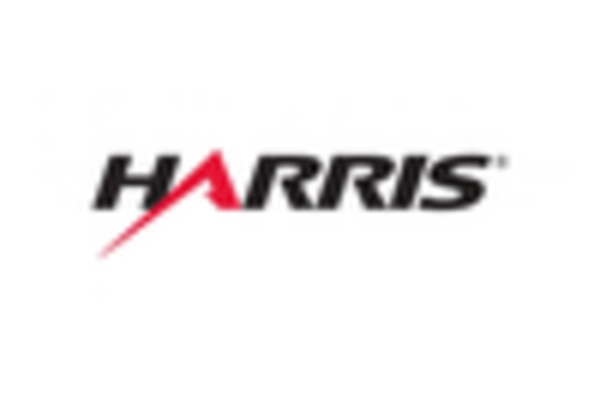Rising Demand for Mobile Communication Solutions
The Telescopic Mast Market is witnessing a notable increase in demand for mobile communication solutions. As the need for reliable and high-speed communication continues to grow, particularly in remote and underserved areas, telescopic masts are becoming essential for establishing temporary communication networks. This trend is particularly evident in sectors such as emergency response, military operations, and event management, where rapid deployment of communication infrastructure is critical. The market is anticipated to expand significantly, with estimates suggesting a growth rate of approximately 6% annually over the next few years. This demand is further fueled by the increasing reliance on mobile devices and the expansion of 5G networks, which require robust and adaptable infrastructure.
Growing Emphasis on Disaster Management Solutions
The Telescopic Mast Market is increasingly recognized for its role in disaster management solutions. As natural disasters become more frequent and severe, the need for effective communication and coordination during emergencies is paramount. Telescopic masts provide a reliable means of establishing communication networks in disaster-stricken areas, facilitating rescue operations and information dissemination. This growing emphasis on disaster preparedness and response is likely to drive market growth, with projections indicating an annual growth rate of around 6% in the coming years. The ability of telescopic masts to be rapidly deployed and their adaptability to various terrains make them invaluable assets in emergency situations.
Increased Investment in Infrastructure Development
The Telescopic Mast Market is poised to benefit from increased investment in infrastructure development across various sectors. Governments and private entities are allocating substantial resources to enhance communication networks, transportation systems, and public safety measures. This investment is likely to drive demand for telescopic masts, which are integral to establishing temporary or permanent communication links in construction sites, disaster recovery efforts, and large-scale events. The market is expected to see a growth trajectory of approximately 5% per year, as infrastructure projects necessitate the deployment of versatile and efficient communication solutions. This trend underscores the critical role that telescopic masts play in supporting modern infrastructure initiatives.
Expansion of Surveillance and Security Applications
The Telescopic Mast Market is benefiting from the expansion of surveillance and security applications. With the growing emphasis on public safety and security, there is an increasing need for mobile surveillance solutions that can be rapidly deployed in various environments. Telescopic masts are being utilized for mounting cameras and other surveillance equipment, providing elevated viewpoints that enhance monitoring capabilities. This trend is particularly pronounced in urban areas, where crime rates necessitate advanced surveillance systems. The market for telescopic masts in security applications is projected to grow at a rate of around 7% annually, reflecting the heightened focus on safety and the need for adaptable solutions in dynamic environments.
Technological Innovations in Telescopic Mast Market
The Telescopic Mast Market is experiencing a surge in technological innovations that enhance the functionality and efficiency of these masts. Advancements in materials, such as lightweight composites and high-strength alloys, are enabling manufacturers to produce masts that are not only more durable but also easier to transport and deploy. Furthermore, the integration of smart technologies, including remote monitoring and control systems, is becoming increasingly prevalent. These innovations are expected to drive market growth, as they allow for improved operational capabilities in various applications, such as telecommunications and surveillance. The market is projected to reach a valuation of approximately USD 1.5 billion by 2026, indicating a compound annual growth rate of around 5% from 2023 to 2026.


















Leave a Comment